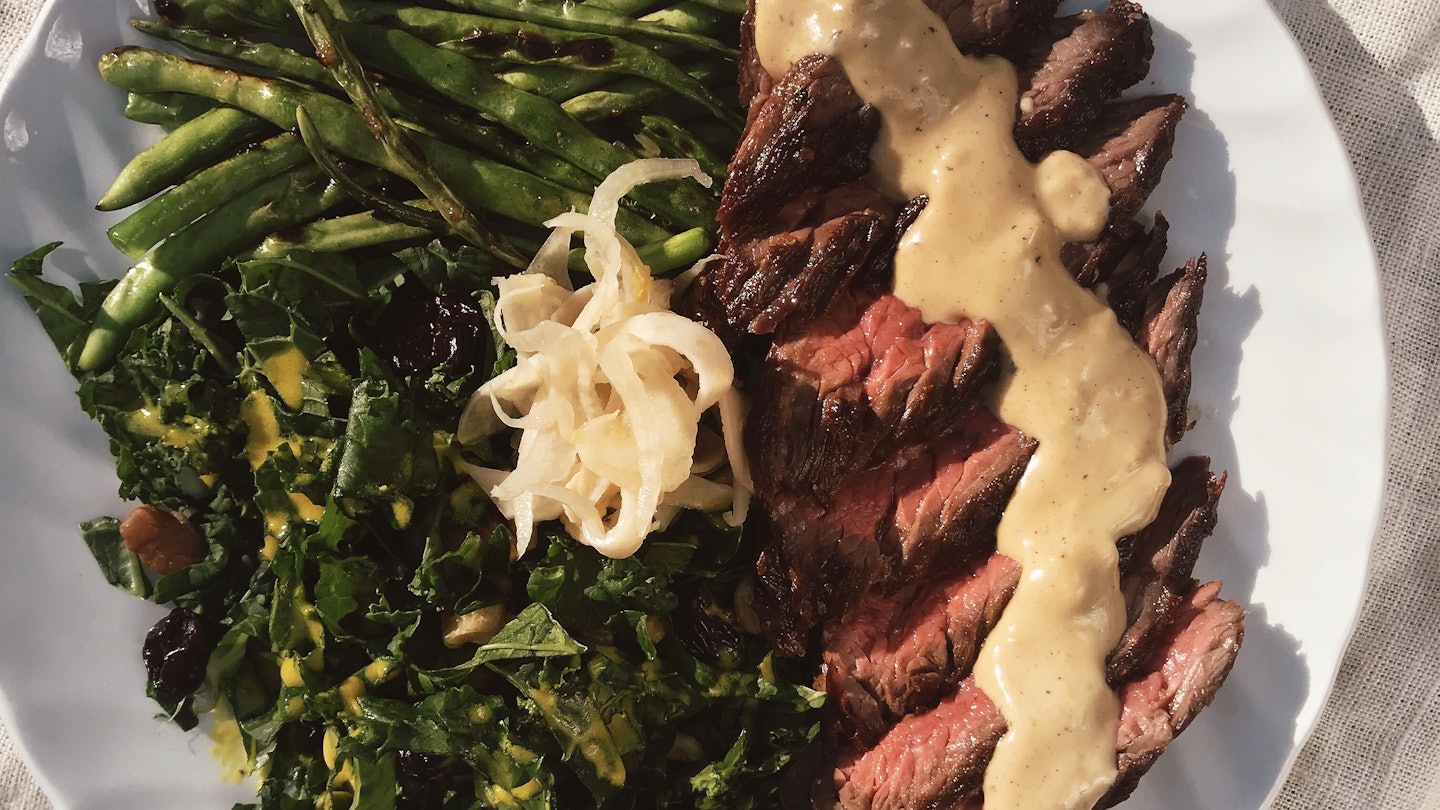

I loved a lot of foods in Norway – salty licorice gummy candy, cloudberry jam, reindeer stew, nettle pie, milk chocolate, waffles with sour cream – but the thing I loved best was brunost. Brown cheese.
Thanks to a meticulous co-operative system, low population density and rolling, picturesque hill after rolling, picturesque hill, nearly all the dairy Norwegians consume comes from small farms that are actually in Norway. And wow, are they proud of it. As soon as I land in Norway, everyone I meet asks, “Have you tried whole milk? Have you tried skim milk? Have you tried cream? Have you tried 2% milk? Have you tried rømme (sour cream)? Have you tried snøfrisk (mild, pillowy goat cheese)? Have you tried yellow cheese (a mild cow’s milk cheese)?”
“Have you tried brown cheese? It’s not really a cheese,” my partner’s mother says to me on one of my first mornings in Brandbu.

“What?” I say, obviously confused.
“It’s made from the byproduct of yellow cheese,” she says.
So I try it, still confused. It’s like eating a slightly sticky version of Colby cheese, one that tastes sweet like brown butter. Suddenly I realize that I know exactly what it is: whey cooked down until it has caramelized.
For the next two weeks, everywhere I travel between Trondheim and Oslo, I am looking at different kinds of brown cheese. Sometimes it is labeled geitost or gjetost or fløtemysost, and other times variations of gudbrandsdalsost. These words change with the dialect and refer to whether the brunost is made of cow or goat milk or both, as well as indicating the level of sweetness. The best way to figure out which is which is to try them, as even Norwegians seem confused as to what the words actually mean, apart from “Gudbrand” which means a style mimicking brunost which comes from Gudbrandsdalen (the Gudbrand Valley).
No matter the style, I quickly learn that how you eat brown cheese matters. First and most important, you absolutely must use an ostehøvel (cheese slicer) to cut it. Brunost is too dense and sticky to cut efficiently with a knife, and if you try you will end up with thick, blobby pieces. I make the mistake only once of thinking it will be good in a savory sandwich, the way deeply caramelized onions are good on a baguette with green apples and brie. It’s not. Brunost is best on a piece of bread with butter and jam, or on top of a warm, buttery Norwegian waffle. The exception that proves this rule is sauces; Norwegians often use the end pieces of brunost to thicken a pan sauce or bulk out a stew.
Related content: Explore these 7 outdoor destinations like a true Norwegian

I discover my favorite way to eat brunost in the mountains somewhere outside of Vinstra and it’s not so much a recipe as it is a brown bag lunch. It’s called matpakke, which literally means “food package.” You make it by putting cheese or fish or meat on bread, wrapping it in matpakkepapir (a sort of parchment paper), and taking it with you to work or on a hike. If it’s the latter, don’t forget to also pack a Kvikk Lunsj, which is essentially a Norwegian Kit Kat bar, but better because the milk chocolate is made with Norwegian diary. “Kvikk Lunsj on a hike is part of the Norwegian national identity,” my partner’s brother-in-law tells me. Two hours later, sitting on a wool blanket inside of a freezing cold cloud of fog, I understand why.
In rural Norway, a law called allemannsrett (the freedom to roam) permits anyone the right to hike or camp on all uncultivated, unfenced land, so long as you stay about 500 feet from any residences, act respectfully and are gone after two days. It was formally passed into law in 1957, but the concept dates back to ancient times and applies to most shores, bogs, forests and mountains. Allemannsrett makes it easy to walk for hours and hours, taking in the serene landscape. It makes it easier still to get lost by accidentally following a sheep’s path trodden in the reinlav (mountain moss). Halfway through a long hike, exhausted and exhilarated from walking uphill, uphill, uphill, nothing sounds quite so good as the calorie-dense bread with butter and brunost, followed by a Kvikk Lunsj and a thermos of coffee.

Back in Brandbu at the end of our trip, I take a little time to experiment cooking with brunost while I still have an unlimited supply at the supermarket right down the hill. I can't resist purchasing Brunost, an out-of-my-budget cookbook I found in Trondheim. And just as the author Ane Nordvik Hasselberg promises, brown cheese melts effortlessly into liquid without becoming grainy and makes caramel sauce in moments.
“It burns so well too,” a chef friend of mine writes to me, referencing a 2013 catastrophe where more than 27 tons of brunost caught fire in a tunnel and stunned locals with its flammability. But you don't need a conflagration to appreciate the pride of Norway's dairy farmers. You just need a thin slice of brunost on some thick brown bread.















